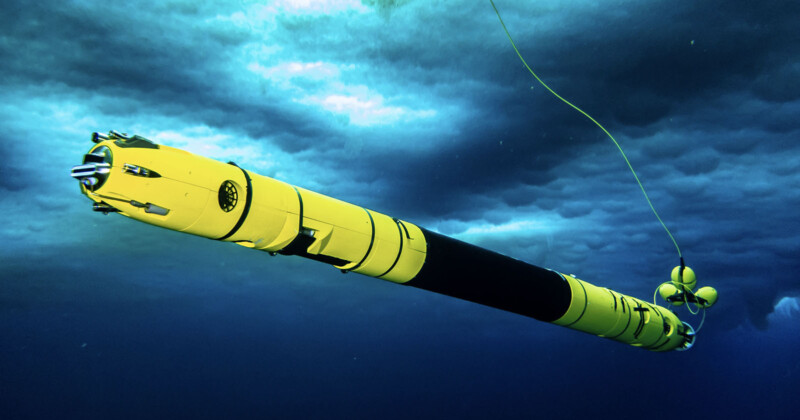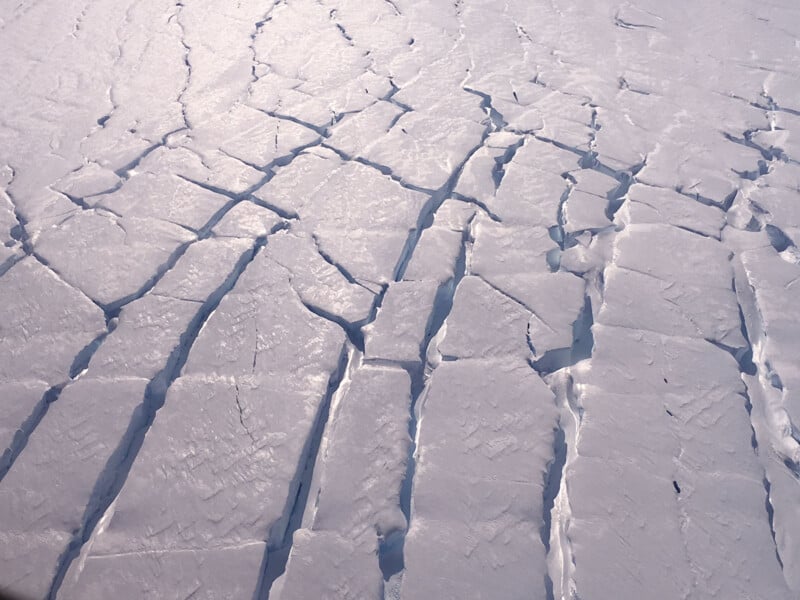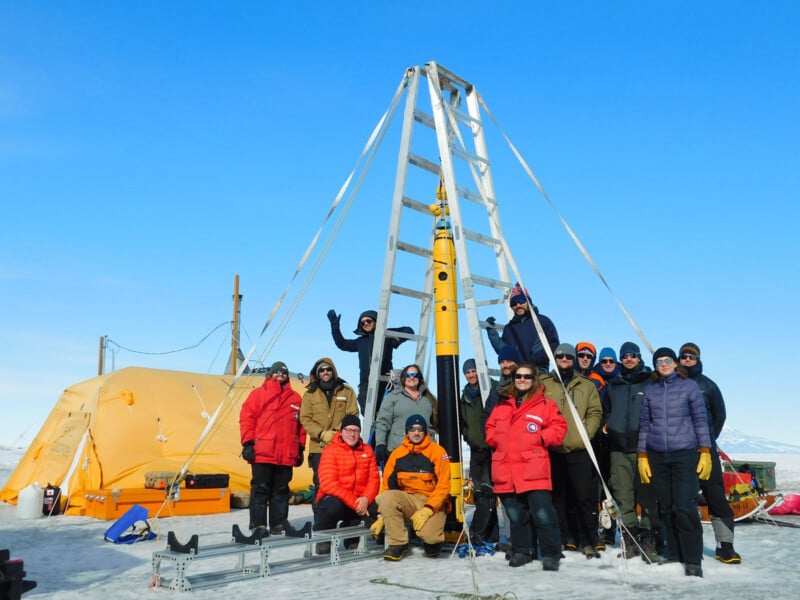Giant Yellow Camera Robot Finds Deep Cracks Under the ‘Doomsday Glacier’

A large yellow modular robot with cameras attached has been studying the Thwaites Glacier, a vast Antarctic ice shelf nicknamed the Doomsday Glacier.
The Icefin oceanographer robot was sent beneath the Thwaites Glacier (roughly the size of Florida) and found deep cracks on its underside which are accelerating its deterioration.
The Thwaites Doomsday Glacier gets its name because if it melts, its contribution to a global sea level rise could prove catastrophic to human communities. Thwaites has the potential to raise ocean levels by two feet, researchers say.
Not only that, but the glacier is a natural dam to other ice in West Antarctica and if that ice melted into the ocean, water levels could rise 10 feet.

Icefin Undersea Robot
The 12-foot yellow submarine robot was dropped through a 1,969-foot-deep (600 meters) borehole beneath the Thwaites Glacier, only made possible by the weakening ice.
Its HD cameras have laser ranging and scaling capabilities, as well as salinity and temperature gauges, sonar systems, and a sidescan for seafloor imaging.

The amazing piece of kit allowed a team of U.S. and British scientists from the International Thwaites Glacier Collaboration to observe areas previously impossible to access.
“It was able to swim up to these really dynamic places and take data from the sea floor all the way to the ice,” Britney Schmidt, an associate professor at Cornell University and a lead author on one of the papers, tells CNN.
What did the Icefun Undersea Robot Find?
It was not all bad news as scientists discovered that the rate of melting beneath the ice shelf was lower than expected, receding at an average of 6.5 to 17.7 feet (2 to 5.4 meters) per year.
“Our results are a surprise but the glacier is still in trouble,” writes Dr. Peter Davis, lead author of one of the studies. “What we have found is that despite small amounts of melting there is still rapid glacier retreat, so it seems that it doesn’t take a lot to push the glacier out of balance.”
The Icefin revealed a complex underwater glacial landscape that features terraces, crevasses, and huge cracks that pierce through the ice shelf. It was in these areas where the research team found that warm, salty water could enter the glacier and widen the cracks.
![]()
The results were published in the science journal Nature last month. “The glacier is not just melting up, but it’s melting out,” adds Schmidt.
A 2021 study of satellite images of the glacier found yet more cracks and the American Geophysical Union Fall Meeting predicted the glacier will probably collapse in five to 10 years.